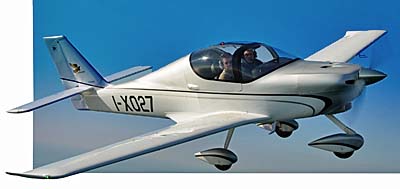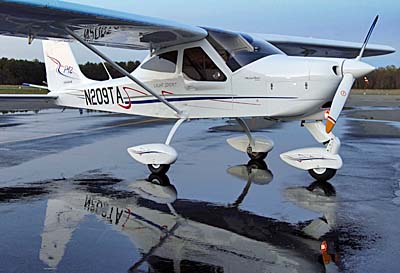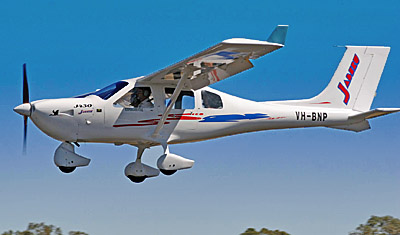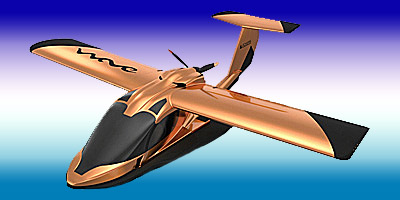Revised Article UPDATED: 6/5/15 / New total LSA and LSA-like chart (at bottom) — At best statistics can be fluid and hard to state precisely. In response to my request for any Australian input below, Neil Jansen responded, “I found some data sourced from the authority that manages such aircraft categories in Australia (Recreational Aviation Australia).” He attached a PDF article. After my review of this document, I can say that I was not grossly off in my guesstimate of 2,000 LSA-type aircraft. I attempted to be conservative and evidently I was. From a review of the charts and article, I would now increase my Australia figures from 2,000 to perhaps 2,700 so the final calculus of around 50,000 worldwide aircraft looks even more solid. That said, my European counterpart, Jan Fridrich, and I since had a conversation that suggests even 50,000 may not fully cover it. However, better to be conservative on such estimates, I believe. —DJ
 One of my favorite tales was taken from an old Delta Air Lines house magazine, the sort sent to employees of the company before email invaded our lives. Airlines have their own meteorology departments and the Delta guys once wrote, “Every time you forecast the weather, you know you’re wrong; you just don’t know by how much or when. If you are ever right, never let ’em forget it.” Ah, yes, remember when we correctly forecast that big storm, back in 1967? I got a lot of chuckles from telling that story.
One of my favorite tales was taken from an old Delta Air Lines house magazine, the sort sent to employees of the company before email invaded our lives. Airlines have their own meteorology departments and the Delta guys once wrote, “Every time you forecast the weather, you know you’re wrong; you just don’t know by how much or when. If you are ever right, never let ’em forget it.” Ah, yes, remember when we correctly forecast that big storm, back in 1967? I got a lot of chuckles from telling that story.
Weather forecasting is much better today, but statistics can often be wrong despite best efforts. Along this line, I heard from a reader, an engineer in Italy, “In your article ‘Analyzing Statistics on Worldwide Aviation,’ you did not mention my country.”
 In this update article, I wish to correct that shortcoming and add a couple more pieces of information. The result of my deeper examination pushes sport and recreational aircraft closer to 50,000 worldwide.
In this update article, I wish to correct that shortcoming and add a couple more pieces of information. The result of my deeper examination pushes sport and recreational aircraft closer to 50,000 worldwide.
My Italian reader, who preferred I did not use his name, wrote, “Apart from being the country from where several LSA aircraft arrive — he mentions Tecnam, which may be the largest LSA and light aircraft producer on the planet — we have over 13,000 registered “ultralight” aircraft with the Aeroclub of Italy (a national institution managing registrations of ultralight aircraft, including gyrocopters and helicopters).” I add that Germany does something similar with its DAeC and DULV, which might account for GAMA having zero information about microlights in Germany, a nation I know to have a significant number of such aircraft.

“The reason why [the aircraft count] is not so obvious,” he further clarified, “is that the certification of pilots and aircraft is done outside of ENAC (Italian equivalent of FAA) and therefore does not get reported in the usual channels where numbers of registered aircraft are accounted.”
“Ultralight (generally meaning the European name for light two seaters, not the U.S. superlight single seaters) registrations for Italy follow the [aircraft registration] format I-1234, or I-A123 now that we passed 10,000 registrations. I have seen I-C1xx (can’t remember the exact number, but it means that we passed 13,000 registrations already).” He added, “I think we had over 2,000 in the last five years or so.”

“So, despite the obvious intention of keeping a low profile to make sure that the Revenue Service does not develop some new creative tax to hit a vulnerable sector, it looks like there are plenty of pilots and planes filling our skies,” the Italian writer concluded. He then invited, “Come visit and we’ll be happy to show you around.” That’s an offer I’d like to take when I also wish to visit the large Tecnam facility in Italy.
My source finished his message saying, “I fly a older Aeronca with American N-numbers using an FAA Private certificate and therefore I don’t even show up in that list.”
I also managed to overlook two other countries of note. My apology and the only excuse I can offer is that GAMA assembled a great deal of info and I simply did not absorb it all. However, the news is good for the light aircraft sector as the numbers rose considerably from my first estimate of about 40,000 light and/or sport aircraft in the world.
I still don’t know exactly how to evaluate Australia’s numbers — as they did not break out the LSA-type group in any identifiable way — but I would conservatively guess their microlight/LSA/VLA sector could have around 2,000 light or sport aircraft. If someone in that country knows better, please do educate me. I’d like for these reviews to be as accurate as possible.
However, neighboring New Zealand offered more data. Their listing through me off as they switched methods after 2005 and again after 2010. Yet based on further study, I can see they show 1,059 “microlights” and they once showed a high, in 2009 of 1,853 “Sport” aircraft. From this I might guess they have around 2,000 of what might be called LSA-types.
So, with good Italy info and more from down under, I feel reasonably confident reporting that pilots around the globe fly somewhere around 50,000 light, sport, recreational aircraft.
The update of substantial information about Italy and my further pondering of the many pages in GAMA’s detailed report suggest two things to me. First, statistics are devilishly hard to obtain and are subject to all sorts of inconsistencies, many of human origin. Secondly, no matter how you cut it, light and sport aircraft are a very substantial sector of the worldwide family of aircraft.
Here you can examine our chart for LSA and LSA-like aircraft around the world. Please consider all the notes to interpret the figures.


Hi Dan, I just read this wonderful article. Thank you for your hard work of data collection! I am very impressed with and excited about the large LSA-class aircraft fleet in the world. That’s encouraging news! Meanwhile, there might be a hidden risk for anyone to use this fleet number as a reference for investment or airplane design because this total number only indicates the fleet of potentially LSA-compliant aircraft or better put, aircraft with LSA-like performance and specification (gross weight, speed etc.) However the problem is that the regulation of these LSA-like aircraft are highly fragmented and segregated so that for OEM the cost of getting the aircraft certified or approved may be very high because it’s very localized market, e.g. LSA is certified category in Europe (conflicting with the new 600kg non-certified ultralight regulation so market size is severely limited) and China (increased gross weight to 700kg so it’s its own unique category now), non-certified in the US (may be replaced with mosaic), not fully overlaps with Canada’ and Australia’s advanced ultralight requirement etc. So the cost to know about the national regulation and local market familiarization and then to modify the design accordingly will likely be too high to bear. Actually, with the advent of mosaic in the US, new 600kg non-certified UL in Europe and China’s new 700kg LSA, I suspect that the LSA-like aircraft’s market might be even more fragmented and segregated from country to country. Just my two-cent (maybe 10 cent after inflation adjustment). –Xin
Thanks for your comments, Xin. You are correct sbout differing regulations creating challenges for aircraft producers, even more when they are small organizations that are challenged to keep up with a patchwork of regulations.
However, I have observed that regulations tend to converge somewhat over time; hopefully it is the good ideas that win. In addition, being too standardized can close the doors to innovation and beneficial disruption. In the field of economics, these are all referred to as trade-offs.